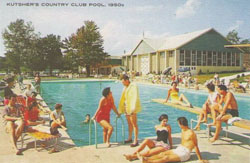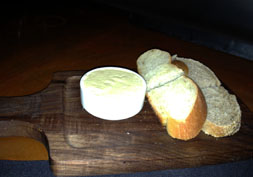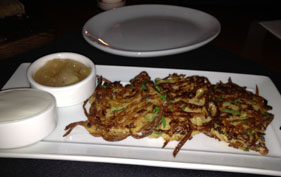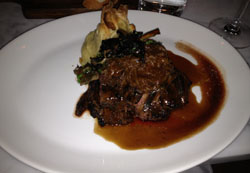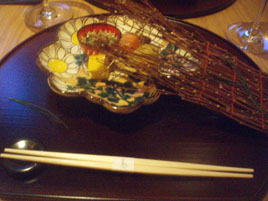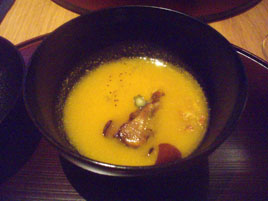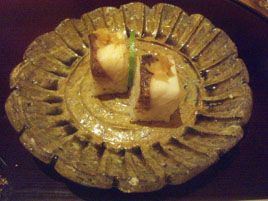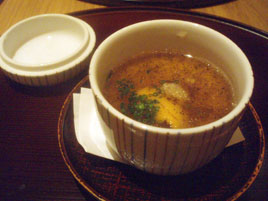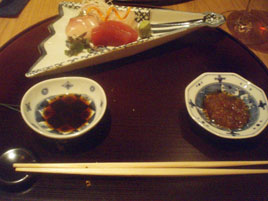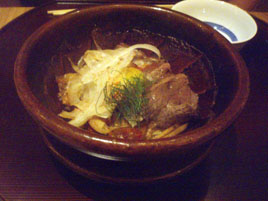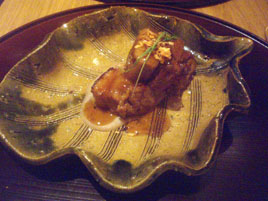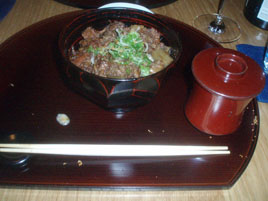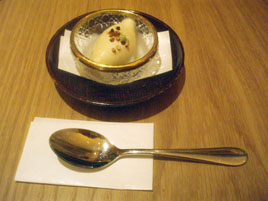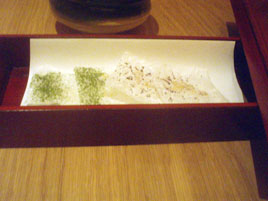Thalassa
 Friday, December 21, 2012 at 08:04PM
Friday, December 21, 2012 at 08:04PM 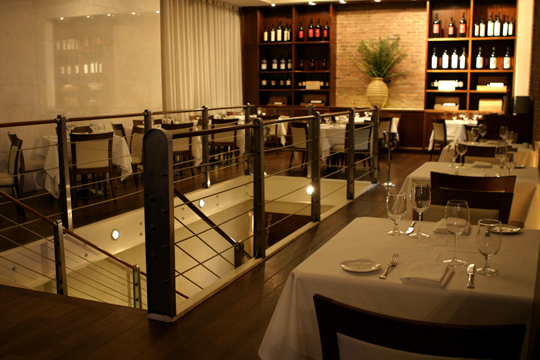
 It almost felt like cheating to accept a publicist’s invitation to re-visit Thalassa, my favorite restaurant that no one writes about. I’ve reviewed it twice before (here, here), and visited at least two other times that I didn’t write about. The week after the publicist-arranged visit, I went on my own dime and spent almost $600 (albeit with a number of extra courses sent out).
It almost felt like cheating to accept a publicist’s invitation to re-visit Thalassa, my favorite restaurant that no one writes about. I’ve reviewed it twice before (here, here), and visited at least two other times that I didn’t write about. The week after the publicist-arranged visit, I went on my own dime and spent almost $600 (albeit with a number of extra courses sent out).
Like many restaurants, Thalassa re-calibrated after the financial crisis. The “fish by the pound” program, which could seem daunting and confusing to customers, has been dropped. In 2006, I wrote that there were “many” fish entrées over $40. There’s now just one, the Dover Sole ($48), which is excellent. The staff no longer sends you home with a pastry for the next day’s breakfast.
The restaurant remains expensive, with appetizers $14–25 and entrées $29–47 (only one less than $32). But over six or more visits, across ten years, I’ve never had anything less than excellent. The space is refined, quiet, and comfortable—perfect for a business dinner or a romantic night out. I’ve used it for both.
The international wine list is outstanding, with over 12,000 bottles and more than 700 labels, but a list that strong ought to be available online—and it isn’t.
The account below is primarily of the publicist-arranged meal, as my visit the following week was a business event not suited to taking photos.
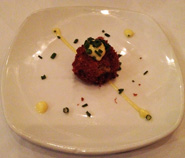


Both meals began with a light cod fritter (above left), served as an amuse. Zuchchini–Eggplant chips ($24; above center), are wonderful: incredibly light and not at all oily. However, it’s only a practical dish if several people are there to share it. There’s an assortment of dips ($10; above right) for spreading on house-made pita.
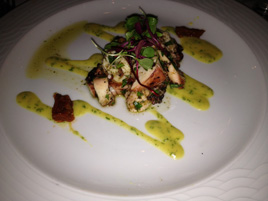

Octopodi ($25; above left) had a terrific, smoky flavor, served with a salad of sun-dried tomato, micro-organic greens, olive oil, and red wine vinaigrette.
Scallops ($22; above right) are a revelation, wrapped in filo dough, served with sheep’s milk butter and a balsamic reduction. I’ve had this dish before: it’s no wonder that it remains on the menu.
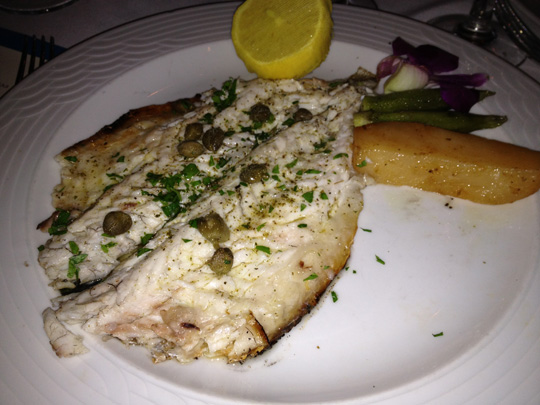
All of the whole fish are served basically the same way: lightly char-grilled, with a sprinkling of lemon and olive oil. The photo above is the Lavraki ($36), which appears as Branzino or Loup de Mer on some menus. The Dover Sole, the following week, was similar. The kitchen lets the quality of the ingredients speak for itself, with a minimum of interference.

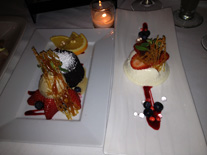

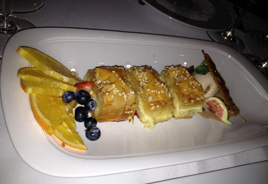
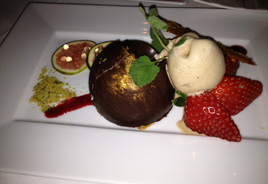
The kitchen sent out practically the whole dessert menu (all $12). You won’t go wrong here, but my favorite was the Galaktobouriko–Citrus Custard layered in Filo and drizzled with honey (second row, left).
At ten years old, Thalassa is entering middle age by restaurant standards. It has survived and thrived, which is a tribute to good management. The dining room was not full for either of my mid-week visits, but there is always steady business. Thalassa is a shade less expensive than it used to be, but the quality of the food has not suffered, and the wine list is still first-rate.
I love Thalassa and always did. That none of the city’s professional critics reviewed it always puzzled me. Perhaps now, on its tenth anniversary, they’ll take a fresh look. Thalassa deserves it.
Thalassa (179 Franklin Street between Greenwich and Hudson Streets, TriBeCa)
Food: Greek, primarily seafood
Service: Elegant but understated
Ambiance: A quiet, serene room, reminiscent of the sea
Rating: ★★★
Why? Thalassa has never been less than excellent, over 6+ visits















